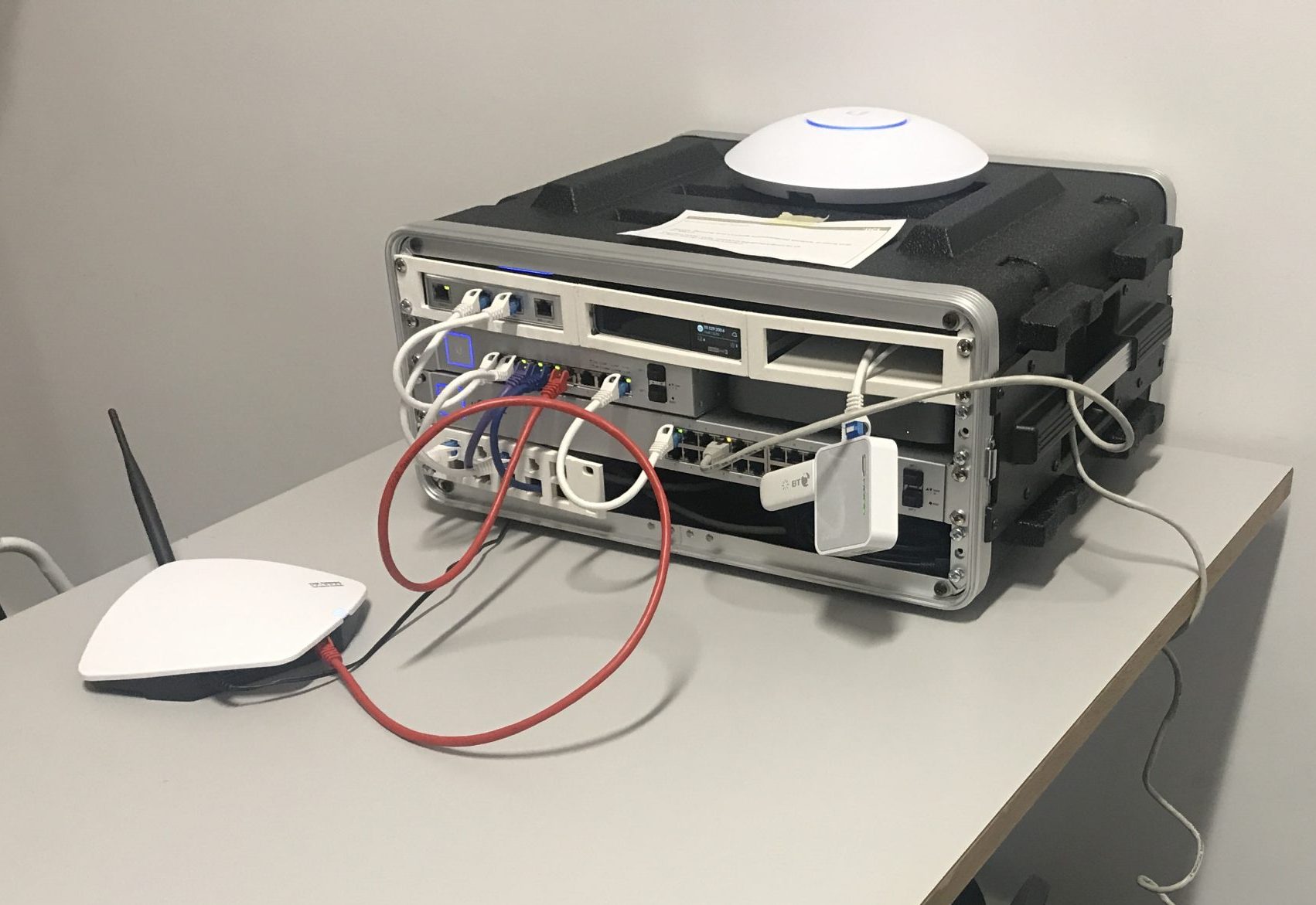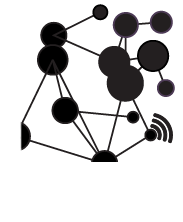Just before lockdown we managed to run a three week workshop with MEng students at Bartlett IEDE called “Sense, Sensing and Control”. We worked with Sam Stamp in IEDE to create a workshop where students built some environment sensors and connected them to a mobile version of our Connected Environments server infrastructure using The Things Network (TTN). The goal was to retrieve data from TTN, store that data in an InfluxDB for analysis and realtime visualisation using Grafana. The students used these tools to explore the differences in the time-series data depending on the granularity of the data captured. The testing was conducted in the fantastic environment chambers over in Bartlett Here East so that the students could explore the variety of factors that can influence how a sensor reads a value.
The workshop allowed us to experiment with and learn how we can best facilitate creating pop up networks across the campus by means of our newly developed CE-Lab Mobile setup. Whilst our lab environment is well connected, for example we can easily connect IoT devices to our own network infrastructure which in turn has allowed us to create our own localised LoRA network, adding an IoT device in other locations to the Eduroam network is not so easy. This situation keeps on resurfacing through student projects – last year we had one project adding environment monitors to the green roof of the Student Centre and the other monitoring workspace activity in the Bartlett workshops – both of which required more work than anticipated to get data flowing to back end servers. Whilst the CE-Lab mobile infrastructure is still work in progress, the workshop process highlighted the value of being able to set-up a lab environment in any location across campus.

We also observed 3 other key learnings:
- Codelab for sharing working materials – we used Google Codelabs to develop and share the lab materials. These worked really well and allowed the class to progress at different speeds but in clearly delineated chunks of activity.
- Benefit of large touch screen for navigating multiple data sets collaboratively – we accidentally made use of a large touch screen during the second week of class at a point where about 20 student sensors were all alive and broadcasting (we moved from a projector in the room to the display to get better resolution graphs in Grafana). The Grafana interface allowed easy interaction with individual and group collections of graphed data which created an ideal environment for peer discussion around the data coming from the sensors.
- Necessity of remote administration to maintain networks – whilst the lab ran over three half day sessions we left the sensors capturing data across a week long period. Being able to access and support the network remotely (being able to SSH into the gateway device to manage connections) proved invaluable in minimising the time spent having to go to site.
This work has helped inform ongoing activity we have exploring an IoT Strategy for UCL East and will feed into the new Connected Environment MSc modules (such as Making, Designing & Building Connected Sensor Systems). Workshop materials are available on the CE-Lab GitHub.


